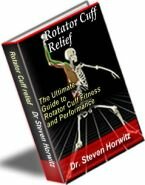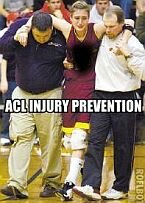Strength Training for Runners



STRENGTH TRAINING FOR RUNNERS
Check back for next class.
CLICK HERE FOR A BROCHURE ABOUT STRENGTH TRAINING AND STRETCHING FOR RUNNING
What is a primary goal of all serious distance runners? TO RUN FASTER!!! The training strategies used to achieve this goal that runners are most familiar with typically include different types of running workouts like interval, tempo, and fartlek workouts. One training strategy that has often been overlooked or relegated to a minor aspect of training is strength training because of the misconception that strength training is counterproductive to running. Runners mistakenly believe that strength training will build larger muscles that will slow them down, increase body weight, decrease flexibility, and ruin form. Strength training, done properly, will not cause any of these adverse effects. In fact, it has been shown to contribute to improved performance.
This article will clear up some of the aforementioned misconceptions and explain why ALL RUNNERS SHOULD STRENGTH TRAIN!
Benefits of Strength Training
When we discuss strength training with our patients/clients, we tell them to think of the human body as an automobile engine. It can be four, six or eight cylinders. All three can go 100 miles per hour, but the eight-cylinder engine will get there faster, maintain that speed, and do both with less wear and tear. Increasing muscle strength and lean body mass (adding muscle without necessarily adding weight) is like adding cylinders to an engine.
It is well established that strength training increases lean body mass and decreases fat weight and body fat % (Dolezal). Runners do not need to be concerned about gaining excess body weight from strength training because high mileage running and high volume aerobic training in general, decrease body weight and compromise muscle mass gains. Second, many long distance runners have ectomorphic body types (naturally slender, linear builds) and research has shown that ectomorphs do not gain as much muscle mass or weight from strength training compared to other body types.
Strength training can also enhance power, which is an often-overlooked component of performance. Power is the product of strength x speed. Strength can be enhanced to a greater extent than can speed from physical training. Therefore, improving strength can substantially enhance power, particularly in runners or individuals that have never done any strength training or who are weak. The need for power during running comes into play when climbing steep upgrades, breaking away from another runner, and during the all-important finishing kick (Lentz).
In addition, strength training can increase stride length. In 1990, Steve Spence, a world class marathoner, increased his stride length from 70 to 73 inches after a year of heavy strength training. This saved almost "a mile's worth of strides in a 2:11 marathon" (Lentz).
Strength training also improves running economy. "Running economy is defined as a steady state oxygen consumption for a standardized running speed. By improving running economy, a runner should be able to run faster over the same distance, or run longer at the same speed, due to lower oxygen consumption." (Dolezal) Johnston demonstrated a four-percent improvement in running economy in collegiate cross country runners after just 10 weeks of heavy strength training. This study stated "upper body strength helps delay fatigue in the arms and postural muscles during a race." As the muscles become fatigued, movement efficiency may become compromised. For example, the forward torso lean and head forward posture that occurs with fatigue can be avoided by improving muscle balance and strength. Similar results were found for increasing lower extremity strength, which is important for maintaining proper hip and knee flexion and stride length (Johnston).
Both acute and overuse injuries can be prevented by strength training. Risk of acute injuries like strained muscles and sprained ligaments, as well as falls, can be decreased with a stronger and more properly balanced musculature. Balanced strength between the opposing muscle groups of the hips, thighs and legs will ensure safe execution of the powerful strides required for up and down hill running and sprinting. More powerful muscles provide better shock absorption during downhill running, thereby preventing joint injury (Johnston). Asymmetry of strength between left and right extremities can also lead to an array of musculoskeletal injuries.
The vast majority of running injuries are of the overuse variety. Remember, the average distance runner makes approximately 3,000 foot strikes per mile. Each leg bears the weigh of the entire body, as both feet never touch the ground at the same time. The force of landing is about three time body weight in three or four tenths of a second depending on running speed. For a 150 pound runner that means a force of 450 pounds occurs on each leg during each stride. Strengthening the thighs, legs, and feet can prevent injuries like plantar fascitis, shin splints, and ilio-tibial band syndrome. Foot strengthening means strengthening the arch of the foot and the foot's system of tendon and ligaments (Luchtenberg) and must be combined with proper footwear. Strengthening the muscles of the core (abdominals, obliques and spinal erectors) will guard against lower back pain. These muscles can then act as a muscular corset or as built in weight belt and provide protection against excessive pressure on the spinal discs.
Overuse injuries that are more common amongst female runners are stress fractures of the foot, leg, and hip. There is strong evidence that strength training can increase bone density, thus guarding against stress fractures and providing a safety factor in the case of falls. This is particularly important for female runners, who are small, have amennorhea (absence or abnormal stoppage of menses) or irregular menstrual periods and who already have proven bone loss.
Organizing a Strength Training Plan
The initial aim for runners is general strengthening of all major muscle groups of the upper and lower body and core. Once that is accomplished, specialized training is performed to focus on individual needs like reducing specific muscular weaknesses and imbalances, and rehabilitating prior and current injuries.
For a strength training program to be safe and effective in the long term, principles of periodization should be followed when designing the program. "Periodization is the gradual cycling (allocation of a specific period of time, whether days, weeks, or months) of specificity, intensity and volume to achieve peak levels of fitness "(Baechle). These time periods can be divided into three time periods, e.g. pre-season, in-season and post-season. Each period has its seasonal demands and the training variables mentioned are adapted to them to reduce the potential for overtraining and bring strength to its peak.
The greatest strength gains should be made during pre-season. This is the period of time before racing season. This is when volume (sets x reps) and intensity (weight lifted) is highest and either running mileage has been decreased and/or running intensity has been diminished.
During racing season, when running mileage and intensity are at their peak, the goal of strength training is to maintain the strength gained in the pre-season. Overtraining must be avoided.
The final part of the training calendar is the post-season during which recovery is paramount. Running mileage is usually diminished and strength training volume and intensity are moderate (Lenz).
Guidelines for Beginning A Strength Training Program
How frequently do I workout? Workout two to three non-consecutive days per week.
What exercises do I choose? Select exercises that strengthen the core (abdomen and lower back), upper body (chest, shoulders, upper back and arms) and lower body (buttocks, front, rear, and inner thighs, calves, and feet).
In what order do I perform these exercises? Since the lower body is the most important and exercises for the lower body are the most challenging, they are performed first. Upper body exercises are done second and core exercises are done last (individual needs may necessitate a change in exercise order and will be discussed in the next article).
How many sets of each exercise do I perform? Perform one to two sets.
How many reps during each set do I perform? Perform 10 to 15.
How much weight do I use? Weight will vary considerably from exercise to exercise. To start, pick a weight with which you can perform 10 to 15 reps without straining. You should feel like you would be able to do three to five more reps.
How much rest do I take between sets? Rest 30 to 60 seconds between sets.
At what speed do I perform each rep? Controlling the movement of the weight is paramount! Lift the weight in one to two seconds and lower the weight in three to four seconds.
In the next article, we will expand upon each of these strength training variables and present sample training plans for beginners as well as runners who are more experienced with strength training.
- Baechle, Thomas, ed. Essentials of Strength Training and Conditioning Champaign: Human Kinetics. 1994.
- Dolezal, B., et.al., Resistance Training for Endurance Runners During the Off-Season. Strength and Conditioning 18(3):7-10, 1996.
- Johnston, M., et.al., Improving Running Economy Through Strength Training. Strength and Conditioning 17(4):7-13, 1995.
- Lenz, D. Strength Training for Runners. American Running and Fitness Association
- Luchtenberg, D. Specific strength training for running - Part I. NSCA Journal 11(4):62-65, 1989.
- Luchtenberg, D. Specific strength training for running - Part II. NSCA Journal 11(5):43-51, 1989.
- Wescott, W. Strength Training For Distance Runners, 1998.
TRY THE STICK!
STRENGTH TRAINING FOR RUNNERS: PART II
Since space is tight, we will get to the point. The first routine is for beginners, those who have never performed strength training or those who have not strength trained in more than six months. The second routine is for those who have some experience with basic strength training.
There are several important points to remember before performing either routine. Perform a general warm-up of 5 to 10 minutes using the treadmill or stationary bike. Stretch all major muscle groups using an active type of stretching like PNF or Active Isolated Stretching (see end of article for suggested reading). Do not perform the standard hold 10 to 30 seconds type of stretching before weight training. Wear cross training shoes, not running shoes, for proper lateral stability. Stand or sit up straight before you start any exercise movement. Do not turn your head from side to side while performing any movement. Pay close attention to body mechanics while lifting a weight from the floor of off of a rack.
When performing barbell exercises, make sure there is an equal amount of weight on each side of the bar. When performing any type of pressing movement, keep your wrist straight - do not let them bend backwards as you press up the bar as this causes wrist, elbow, and shoulder problems. While performing any exercises that require gripping of a bar or dumbbell, keep your wrists straight. "Tennis elbow" will occur if you let your wrists drop. Working with a partner is important for several reasons: partners can spot each other, help correct lifting technique, and provide encouragement.
The exercises have been arranged so that you will exercise large muscle groups before smaller muscle groups. This allows you to train large muscle groups vigorously and prevents early fatigue of the small muscle groups. Both routines are designed to be performed twice per week with 72 hours between workouts.
Routine 1: This routine is designed to develop muscular strength in all major muscle groups utilizing both machines and free weights. One major concern is to minimize the initial muscle soreness associated with beginning a strength training program. During the first two weeks, pick a weight with which you can perform 10 easy repetitions and only do one set of each exercise with 60 second rest interval between each set. After week three, perform two sets of each exercise with a 30-60 second rest interval.
The following is a list of exercises, the muscle groups they work and hints on proper form.
Leg Press: Quadriceps and Gluteals - Keep knees lined up over toes during movement. Keep feet about shoulder width apart.
Leg Extension: Quadriceps - Sit up straight and do not rock back and forth.
Leg Curl: Hamstring - Keep buttock/hips down on the bench, do not let them pop up.
Heel Raise: Gastrocnemius and Soleus- Perform this with no weight off of a raised platform and allow the heel to move lower than the platform.
Toe Squeezes: Feet (Arch) - Grasp object (marble, towel) with toes and squeeze.
Ankle Dorsiflexion: T ibialis Anterior (shin) - Pull foot toward body using dumbbell, cable or pulley for resistance.
Bench Press: Pectoralis Major - Use a machine to start.
Seated Row: Upper Back - Use a machine to start. Sit up straight.
Shoulder Press: Deltoid - Use a machine to start.
Shrug: Upper Trapezius - Use dumbbells. Move up and down, no rolling movements.
Biceps Curl: Biceps - Do not let elbows come forward of body.
Triceps Extension: Triceps - Bend elbows to 90 degrees.
Abdominal Crunch: Rectus Abdominus - Perform a proper crunch by pulling your belly button down to the floor and holding that position throughout the rep.
Back Extension: Erector Spinae - Lay prone and arch up gently while squeezing buttock.
Routine 2: This routine is designed to further strengthen all major muscle groups using more free weight movements. You must have a trainer show you the proper form for the squat and stiff legged dead lift movements. Toe squeezes and ankle dorsiflexion may be done only once per week. Do three sets of squats and two sets of other exercises, 8-10 reps with a 90 second rest interval for squats and 30-60 second interval on all other exercises.
Squat: Gluteals, Quadricep, Hamstring - Keep your head straight and eyes focused on a point at least eye height or above. Lower weight slowly bringing buttock back before the downward decent. Keep your knees over your toes and your torso upright by keeping your elbows forward.
Stiff Legged Dead Lift: Hamstrings - Lower the weight to just below your knees.
Heel Raises: Gastrocnemius, Soleus - This is done in a seated position.
Toe Squeezes: Feet (Arch)
Ankle Dorsiflexion: Tibialis Anterior (Shins)
Bench Press: Pectoralis Major - Use free weights. Use a barbell one day and a dumbbell the other.
Seated Row: Upper Back - Use a machine.
Shoulder Press: Deltoid - Use dumbbells.
Shrug: Upper Trapezius - Use a barbell Do NOT roll shoulders or let your head come forward. The movement should be straight up and down.Biceps Curl: Biceps - Alternate dumbbells with a curl bar.
Triceps Extension: Triceps - Alternate dumbbells with a cable pushdown.
Abdominal Crunch: Rectus Abdominus - Learn to use the Swiss Ball.
Back Extension: Erector Spinae - Use a back extension bench.
These routines will get you started and give you a solid base of strength. Variation is important as you advance, so speak to a knowledgeable source to vary your routine. Good Luck!
Suggested Reading on Stretching
Alter, Michael. Sports Stretch.
Evgenth, and Hamburg. Autostretching.
Mattes, Aaron. Active Isolated Stretching.
Part I of this series was in the Montgomery Country Road Runners Club newsletter The Rundown in November, 1999. Part II was in the January, 2000 issue.
Steven Horwitz, D.C. was the chiropractor for the 1996 United States Olympic Team and has traveled internationally with USA Track and Field. He is certified as a chiropractic sports physician, strength and conditioning specialist, and certified in Active Release Techniques® and Graston Techniques. He is the chairman of the Potomac Valley/USA Track and Field sports medicine committee and practices in Silver Spring 301-622-9000 or Rockville 301-770-4602 (www.youcanbefit.com).
Rich Shulman owns FIT PRO Personal Fitness Services (301-468-BFIT or FitRich@AOL.com), a fitness training and consulting practice in Rockville serving Maryland, Northern Virginia, and Washington, D.C. He specializes in customizing personal fitness and nutrition programs, and group and corporate fitness education. He has completed Master's degree work in exercise physiology and is certified as a personal trainer, strength and conditioning specialist, and post-rehabilitation specialist.
To read a comprehensive article on Running Injuries see Picking Up The Pace.
|
The Ultimate Nutritional Lie Detector Test LEARN MORE 
|
Kettlebell Rehab

Click Here
To See How Kettlebells will transform your body!
Vortex Rehab

Click Here
To See How This
Revolutionary Machine
Can Help You!
Partner / Support

Loans up to 3 months - fast cash advances for up to 90 days and up to $5,000!




















